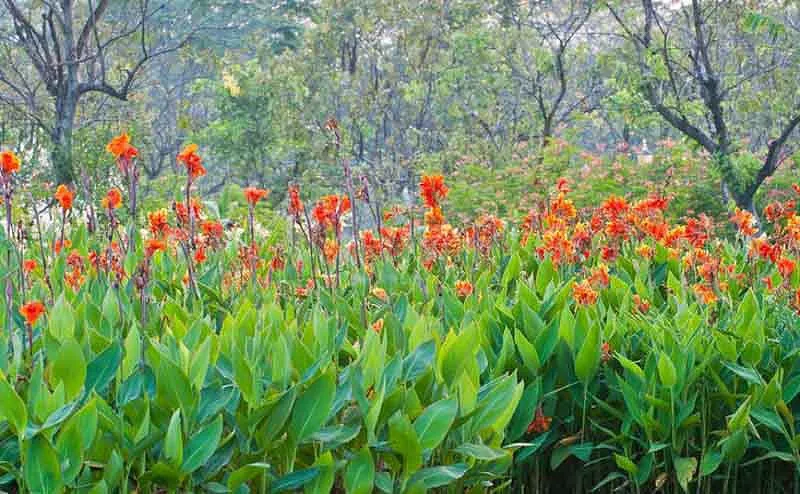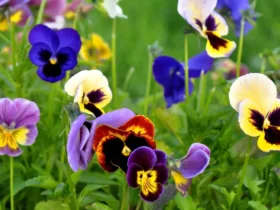Cannas, often cultivated for their striking foliage resembling large banana leaves, infuse gardens with a touch of tropical allure and strong ornamental appeal. Their heights span from 2 to 8 feet (60-240 cm), and their captivating bloom season extends from mid-summer to fall, presenting a warm spectrum of colors ranging from vibrant reds, oranges, and yellows to delicate pinks and creams.

While the flowers of Cannas only grace the garden for a brief period, usually a day or two, their transitory nature is offset by their rapid succession.
The standout feature of these plants is undoubtedly their foliage, characterized by sizeable paddle-shaped leaves that can exhibit striking stripes or variegations. These leaves emerge in hues of green or bronze, contributing to the plant’s overall visual impact.
Canna is known by various names, including Canna lily, Canna Lilies, Indian Shot (Canna indica), and specific cultivar names such as ‘Wyoming,’ ‘Brilliant,’ ‘Ingeborg,’ ‘Lucifer,’ ‘Pretoria,’ ‘Striata,’ and ‘Tropicana.’
To thrive, Cannas demand full sun exposure and well-drained, organically rich, and moisture-retentive soils. Their beauty is best showcased when they are massed against walls or hedges, or nestled within garden beds where they can assert their presence. For a spectacular effect, they can be featured on patios and are also well-suited to container gardening.
Given their sensitivity to frost, it’s important to remember that Cannas are tender perennials, hardy only within zones 8-11. In colder regions, their bulbs should be carefully dug up before the arrival of the first frost, stored indoors in a dry location throughout winter, and then replanted in the spring.
While relatively pest-resistant, Cannas in the United States may need protection from the Canna Leaf Roller, which can eventually damage the leaves. Vigilance is also necessary to fend off Japanese beetles, caterpillars, slugs, and snails that might chew on the foliage.
To ensure a prolonged blooming period, deadheading is recommended throughout the growing season, allowing these captivating plants to exhibit their vibrant beauty for as long as possible.








